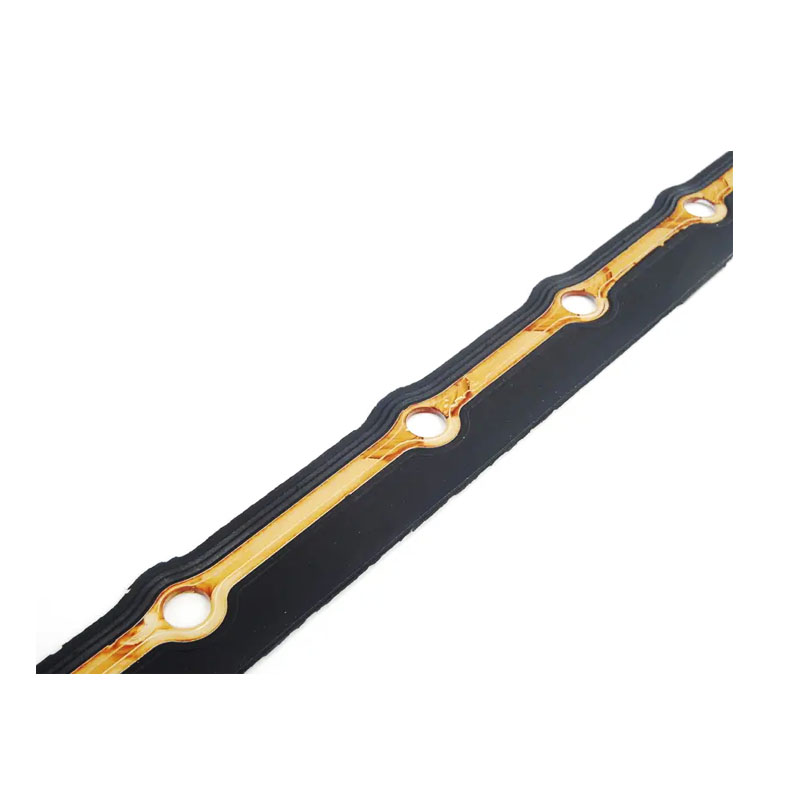oil tank gasket
Understanding Oil Tank Gaskets Importance, Types, and Maintenance
Oil tanks are essential components in various industries such as transportation, manufacturing, and energy production. They store crude oil, diesel, and other petroleum products that are critical for daily operations. The efficiency and safety of oil tanks heavily depend on the quality and condition of their gaskets. An oil tank gasket is a sealing component that plays a vital role in preventing leaks, ensuring the integrity of the tank, and maintaining operational efficiency. This article will delve into the significance of oil tank gaskets, the different types available, and essential maintenance practices.
The Importance of Oil Tank Gaskets
Gaskets act as seals that fill the spaces between two or more mating surfaces, preventing fluid from leaking. In the context of oil tanks, gaskets are crucial in various connections, such as flanges, fittings, and access points. The primary functions of oil tank gaskets include
1. Leak Prevention A primary concern in any oil storage system is the risk of leaks, which can lead to environmental contamination and significant financial losses. Effective gaskets ensure that oil remains contained within the tank, minimizing the risk of spillages.
2. Pressure Maintenance Many oil tanks operate under specific pressure conditions. Gaskets help maintain these pressure levels by sealing connections tightly, ensuring that the tank can operate efficiently without risking damage to the structure.
3. Safety Leaks and spillages can pose serious safety hazards, including fire risks and health dangers to workers and the surrounding environment. A reliable gasket system is essential for maintaining safety standards in oil handling and storage.
4. Operational Efficiency Well-fitted gaskets contribute to the overall efficiency of oil storage and distribution processes. By preventing leaks and ensuring structural integrity, they help maintain optimal operational conditions.
Types of Oil Tank Gaskets
Oil tank gaskets come in various materials and designs, each suited to specific applications. Understanding the different types can help in proper selection and application
1. Rubber Gaskets Commonly used due to their excellent sealing properties, rubber gaskets are resistant to oil and many chemicals. They are suitable for medium-pressure applications and are easily replaceable.
oil tank gasket

2. Metal Gaskets These gaskets are designed for high-temperature and high-pressure applications. They provide durability and longevity but may require precise machining for a proper seal.
3. Composite Gaskets Combining materials like rubber and metal, composite gaskets offer versatility. They are effective in applications that encounter a range of temperatures and pressures.
4. PTFE (Teflon) Gaskets Known for their chemical resistance, PTFE gaskets are ideal for aggressive fluids and extreme conditions. They provide excellent sealing properties, but their installation requires careful handling.
Maintenance of Oil Tank Gaskets
Regular maintenance and inspection of oil tank gaskets are crucial for their longevity and effectiveness. Here are some best practices
1. Routine Inspections Regular checks for wear, cracks, and deformation can help identify problems before they lead to leaks. Gaskets should be inspected during routine tank maintenance or when connections are opened.
2. Proper Installation Gaskets must be installed correctly to ensure a proper seal. Following manufacturer guidelines and using the right tools can prevent issues.
3. Environmental Considerations Ensure that gaskets are suitable for the specific oil type and operational environment. Selecting the right material can enhance performance and longevity.
4. Timely Replacement Worn or damaged gaskets should be replaced promptly to avoid leaks and maintain safety. Keeping an inventory of spare gaskets can help facilitate quick replacements.
Conclusion
Oil tank gaskets are critical components that ensure the safe and efficient operation of oil storage systems. Understanding their importance, types, and maintenance can mitigate risks associated with oil leaks and ensure compliance with industry standards. By prioritizing gasket quality and maintenance, businesses can safeguard their operations and the environment.
-
Understanding the Front Main Engine Seal: Purpose, Maintenance, and Installation
News Jul.29,2025
-
Understanding O-Rings and Seal Rings: Types, Applications, and Custom Solutions
News Jul.29,2025
-
Understanding Crankshaft Oil Seals: Rear Seals, Pulley Seals, and Their Role in Engine Integrity
News Jul.29,2025
-
The Importance of Front and Rear Crankshaft Seals in Engine Performance and Oil Management
News Jul.29,2025
-
Crank Oil Seals: Functions, Types, and Cost Considerations in Engine Maintenance
News Jul.29,2025
-
A Comprehensive Guide to O-Rings and Seals: Types, Materials, and Global Applications
News Jul.29,2025
-
Mastering Diesel and Performance Engine Maintenance: A Guide to Critical Oil Gaskets
News Jul.28,2025
Products categories















